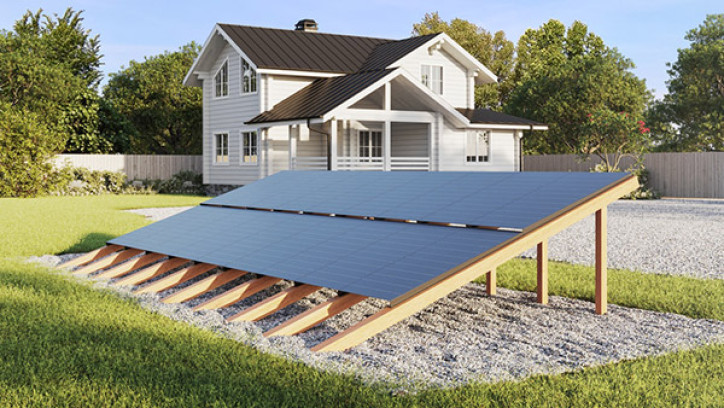14.1 Ground-mounted solar panel arrays

Solar panel arrays outside of rural zones are limited to 20 square metres, including any existing ground-mounted solar panel arrays. The size of solar panels must be measured (including the existing ones) according to the actual size of panels installed.
Solar panel arrays outside of rural zones are limited to 20 square metres, including any existing ground-mounted solar panel arrays. The size of solar panels must be measured (including the existing ones) according to the actual size of panels installed.
In rural zones the likelihood of encountering an existing infrastructure and people is significantly lower than in urban zones. For this reason, as long as all conditions in this exemption are met, there is no restriction on the size of ground-mounted solar array panels in rural zones.
Before you begin, please read the notes for ground-mounted solar panel arrays.
What is exempt
- An urban dwelling owner intends to erect 15 square metres of ground-mounted solar panel arrays on their land. The council's wind maps classify the location as 'high'. The panels will be fixed to the ground with multiple posts or columns, and will be located 7 metres from the boundary
- A rural dwelling owner intends to erect ground-mounted solar panel arrays with total surface area of 50 square metres on their property. Council maps indicate the owner’s property is in a low wind zone. The panels will be fixed to the ground with multiple support points and located 10 metres from the boundary. As the property is rural, the 20 square metre limit does not apply.
What needs consent
- An urban-based owner of a dwelling intends to erect 30 square metres of ground-mounted solar panel arrays on their land. The council maps classify the location of the owner's property as a low wind zone. A building consent is required because the size of solar array panels exceed 20 square metres outside of a rural zone.
- An urban-based owner of a dwelling intends to install 15 square metres of ground-mounted solar panel arrays on their land. The council maps classified the location of the owner's property as a low wind zone. The site plan shows that panels are placed within 2 metres from the residential dwelling. A building consent is required because the panels are located less than 5 metres from a residential building.
- A rural-based owner of a dwelling intends to erect ground-mounted solar panel arrays on their land. Council maps classify the proposed location as an "extra-high" wind zone. A building consent is required as the wind zone exceeds a high level.
- A farm owner decides to install ground-mounted solar panel arrays on their farm. The owner wants to support the bank of panels with a single post to minimise the disruption on their land due to required excavation. A building consent is required because the owner has opted for a single post or column to support the solar panel arrays.
- A rural-based owner of a dwelling intends to erect 40 square metres of ground mounted solar panel arrays on their land. Council maps classify the location of the owner’s property as a low wind zone, and the panels are to be fixed to the ground with the multiple support points and located with at least 10 metres distance from any boundary. However, the drawings show that the maximum distance from the top of the panels to the ground is 5 metres. A building consent is required because the maximum height of panels from the ground exceeds 4 metres.
What the law says
28C. Ground-mounted solar panel arrays
1. Building work in connection with a ground-mounted solar panel array if—
(a). the array, if outside a rural zone, does not exceed 20 square metres in size; and
(b). the array is supported by a frame or structure that is on the ground; and
(c). the frame or structure is attached to the ground by more than a single post; and
(d). the distance from the top of the array to the ground does not exceed 4 metres; and
(e). the array is at least 5 metres from any residential building, public road, railway, or legal boundary; and
(f). either—
(i). the design wind speeds do not exceed 44 metres per second (calculated using Verification Method B1/VM1); or
(ii). the array is located in a wind zone no greater than high (as defined in Acceptable Solution B1/AS1).